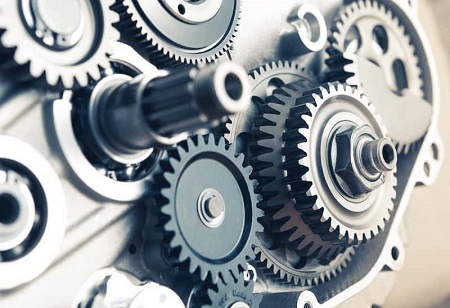Transfer of mechanical power is the rudimentary requirement for most of the industrial machinery today. Gears play an important role in enabling the same by making efficient use of power and directing it purposefully to the right part of the machinery. With advancement in the usage of right material and design, the load carrying capacity and endurance of gears has increased over time.
This has enabled manufacturers to keep the factory running for a long period of time with minimal repair and maintenance. The primary factors that define the longevity of industrial gears are dimensioning and lubrication. Only the right dimensioning and lubrication can render the desired long life to the gears.
If we look at the application of industrial gears, there are a host of industries which are reaping benefits out of its usage in the machinery being operated. Its applications in heavy industries and manufacturing industries are manifold and all of them can be attributed to the capability of industrial gears to reduce mechanical work in the respective operations.
Gears have an inherent role to play in industrial automation. For any automation system to work, the gears have to conduct the actual maneuver. No matter how intricate and clearly laid out are the algorithms of the software system, when it comes to execution, it is the gears that carry the load.
Significance of design and lubrication
As the end-use industries rise, industrial automation has picked up pace globally and it is going to boost the growth the industrial gear market in the near future. Owing to the increasing use of gears in the routine production activities across the world, the industrial gear market is expected to become worth US$ 111.4 billion in revenue by the end of year 2030.
Major demand is coming from the Asia Pacific region because of the booming automotive market in the region which is creating a need for efficient drive trains and fuel saving engines. To the core of operation of drive trains lie the industrial gears which work like the integral cog shaping them up and enabling their proper functioning.
When it comes to energy efficiency, gears can prove to be the decisive factor as the better they perform, the higher will be the fuel efficiency. Their performance can be improved by state-of-the-art design and lubrication techniques.
A similar trend can be seen in the area of construction wherein the mushrooming infrastructure programs are causing the demand for construction equipment to grow. Industrial gears have extensive usage in the manufacturing process of construction equipment and as a result, the growth is being cascaded from construction to industrial gears market.
In addition, there are other areas witnessing high demand for gears and they are mining, industrial machinery, power plants, and oilfields. The energy sector which is quite upbeat about its growth in the near future and rightly so is going to open new avenues for industrial gear applications.
Businesses have already started harnessing the market potential in the energy sector. One of the most conspicuous applications of industrial gears in the energy segment is in the segment of renewable. Wind turbines and hydro turbines use gearboxes to transmit the absorbed kinetic energy forward to the generator for producing electricity. Thus, it is the gears that are enabling us to make use of the renewable energy sourced from wind and water.
“Gear manufacturing market in India is growing because of Make in India focus. Many OEMs originally sourcing gear and transmission product have started to localize the same in India and are getting it done from Indian manufacturers. However, the challenge that remains is that Indian gear manufacturers have to achieve those high expectations in terms of quality requirements for OEMs,” says Suresh Vekaria, Managing Director, Synnova Gears & Transmissions.
Addressing the challenge of dilapidation
As effective as they are, industrial gears like every piece of machinery are not immune to wear and tear. Long term usage of gears can cause them to break or get deformed, making them unfit to be used further. And the most important apprehension is that in terms of operation of the machinery, there is usually no indication of a fault until the complete breakdown happens.
In such case, continuous maintenance and quality check of industrial gears becomes extremely important, ignoring which can not only disrupt operations but prove to be fatal. The primary reasons for failure of gears are design errors, manufacturing faults, repetitive stresses because of improper balancing of axial and radial load, and degrading of lubricant properties.
In order to address the failures, new types of gears are being made and better lubrication is being strived for. Right from spur gears and helical gears, the industrial gears have a come a long way with new types being produced such as double helical gear, herringbone gear, bevel gear, and hypoid gear for varied applications. Manufacturers are increasingly producing more and more worm gears that are proving to be effective in achieving large speed reduction ratio.
Owing to their multifarious benefits, gears of all types are finding their application across the manufacturing and energy spectrums which are going to be the lifeblood of prosperity and sustainability.
